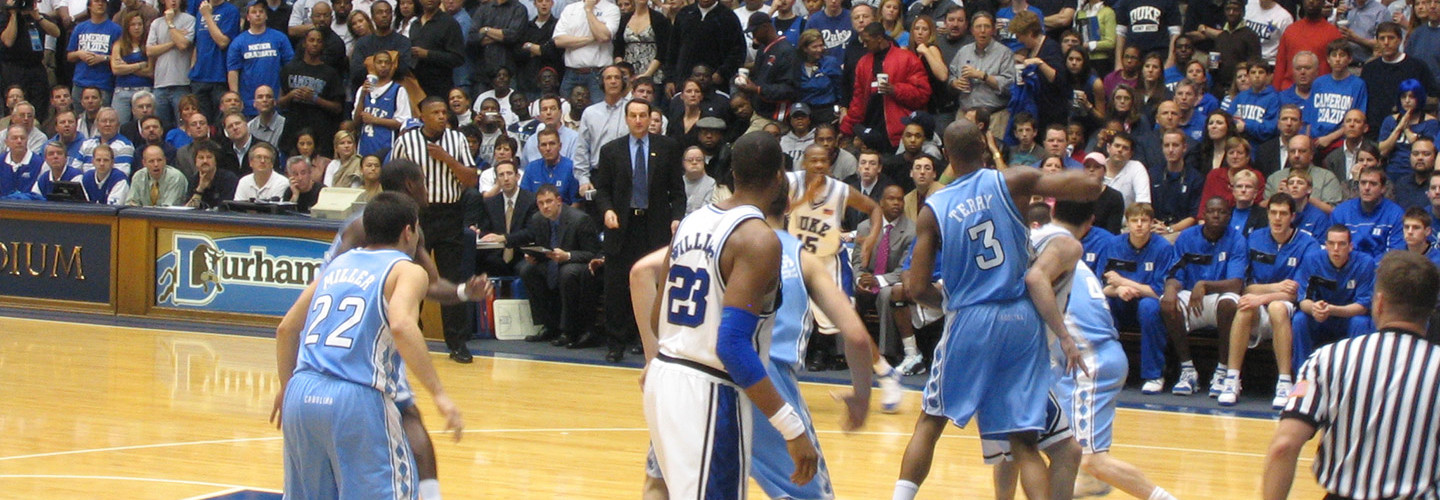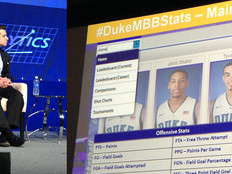Duke University Partners with SAP to Revamp Basketball Stats and Analytics
Duke University’s men’s basketball team may have been bounced from the NCAA tournament in the second round last weekend (South Carolina beat them, 88-81), but their fans can now dive into basketball stats as never before.
Thanks to a partnership with SAP, Duke fans can access more than 100 years of stats in a retooled website that is more dynamic, detailed and visually interesting than traditional stats pages with static data.
The recently announced teaming was years in the making and has resulted in a repository of data that can evolve to meet the demands of Duke’s global fan base.
Duke’s Partners with SAP to Bring Stats to Life
It all started with Curtis Snyder, the Duke athletics department's director of internet operations, says Ryan Craig, executive director of digital strategy for the department. “He’s the godfather behind all of this,” Craig adds. Snyder, who joined the department in 2003, worked nights and weekends to digitize all of Duke’s men’s basketball stats going back to 1906.
“He started working on it 10 years before anyone knew what the project was going to be,” Craig says. Then the university decided to “breathe new life” into the database Snyder had created. “We wanted to make sure we could create a really engaging experience for our fans.”
Duke hoped to use that experience to draw fans into the Duke athletics ecosystem, Craig says — to generate revenue, sell tickets, create a more engaging relationship with fans and strengthen Duke’s brand.
“We wanted this to be for Duke and by Duke,” and for anyone who considers themselves part of the Duke community, Craig says, including students, staff members, former players and prospective students.
The new database will help fans settle debates and dive deep into statistics — for instance, who has more career assists, Bobby Hurley or Quinn Cook? (It’s Hurley, with 1,076 to Cook’s 509.) Fans can use the database to compare teams from different eras, and it will also serve as a resource for staff and the media.
The Duke/SAP partnership began around 2013, after SAP found out that the university had a “clean database” of stats. The company showed Duke the stats solution it had built for the NBA, according to Frank Wheeler, regional vice president and general manager for SAP Sports and Entertainment North America. The goal was to create something with similar features, even though Duke’s data set was smaller than the NBA’s.
SAP made sure to involve undergraduate and graduate students in the creation of the application, Wheeler says, “to meet the standards of what they expect.”
Students were involved not just in brainstorming and design, Craig says, but also in writing code for the app. First- and second-year students at Duke’s Fuqua School of Business tested the app’s user interface with classmates and factored that feedback into the final design.
A key element of the project was ensuring the data was digitized properly and was accurate. “If data wasn’t accurate, even if we had a pretty solution, no one would care,” says Johannes Lombard, executive vice president of analytics, budgeting and technology with LSI Consulting, which helped with the database rollout.
Using SAP HANA to Create a Dynamic Database
Duke decided to go with the in-memory computing found in SAP’s HANA platform, which can scale up with ease and handle massive volumes of data, and its UI5 repeatable solution for data visualization.
SAP wanted to guarantee that the app had the reliability, scalability and quality Duke needed, Wheeler says. “Once the data accuracy was complete, we wanted to make sure people could tap into it and it would perform,” he says, adding that Duke has millions of fans around the world who would want to access the app anytime, from anywhere. The UI5 solution allowed Duke to create a flexible “fan-friendly, fan-facing app,” says Wheeler. After games, Duke staff members can easily load new data into the database.
Unlike Duke’s old stats page, which was static and unable to compare career stats for different players, the new app allows fans to compare players from different decades. Wheeler says that the app is designed to be interactive and easy for fans to use. The app is more aesthetically pleasing and has greater functionality and navigational capabilities. Duke will soon add additional features, including side-by-side player comparisons, Craig says.
Duke began promoting the database at the start of this year’s NCAA tournament. And although the Blue Devils were sent home early, the university now has a new digital storehouse for its illustrious basketball history.
“We wanted to release this in a form that we were proud of, and that aligned with everything we do on the men’s basketball side,” Craig says.






